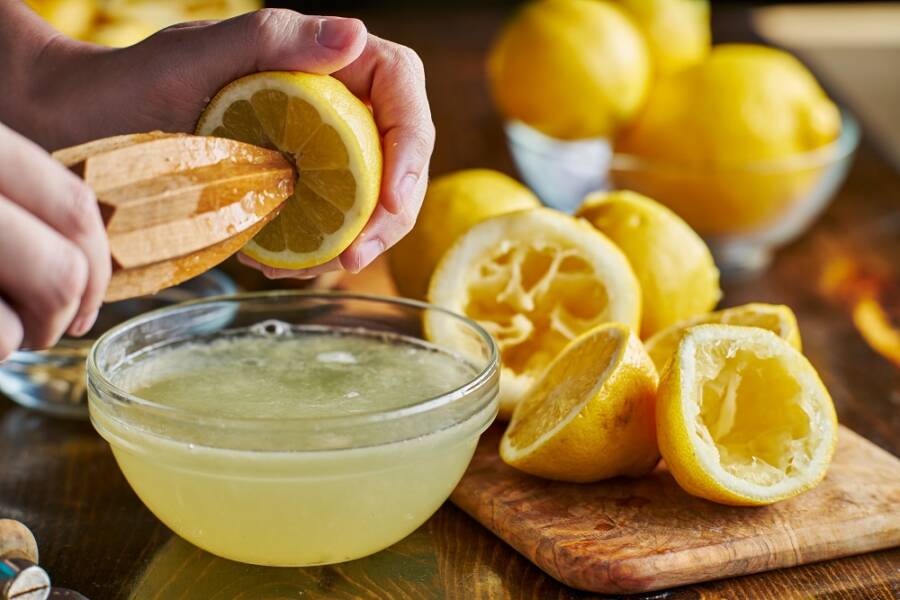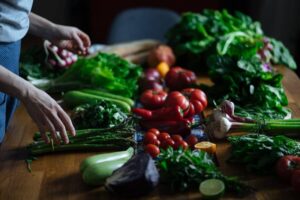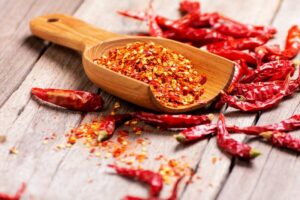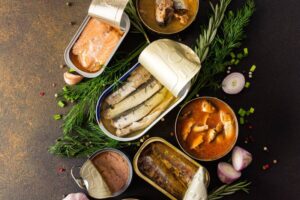These retro cooking tips will whisk you back in time and help you upgrade your cooking skills!
If you were as close to your grandma as I was to mine, you probably learned a few cooking tips from her that you still remember years after she passed away.
Whether it’s about preventing food waste, creating amazing bread and cakes, or feeding a crowd on less money, generations that have survived wartime rationing and past cost of living crises are probably going to have some fantastic cooking tips to share.
But do you know what the first retro cooking tips I learned from my grandma are? I don’t want to reveal the secret right away, so please stay with me until the end of the article. Come on, it will be fun! After all, Grandma knows best, right? Let’s start.

Use a wooden spoon
One of the first retro cooking tips I learned from my grandma is to always use a wooden spoon. Grandma always used a wooden spoon to stir her food for many good reasons. In addition to being kinder to your cookware than metal spoons, wooden spoons can be used for various tasks, from scraping and stirring to serving.
In addition to not combining with acidic foods like metal spoons do, wooden spoons are incredibly resilient and, with the right maintenance, can last for many years.
Never cook fresh herbs
The delicate, aromatic flavor of fresh herbs will be lost if they are added to a bubbling pot. Rather, sprinkle them on top after the dish is cooked.
A bouquet garni, which is a tied-up bunch of parsley, thyme, and bay leaves (complete with stalks), is the only exception to this rule. For added flavor, this should be cooked in the sauce before being taken out at the end.
Use flour to make the bacon crispier
Although this useful bacon trick is one of those retro cooking tips I first saw at my grandma’s, it has recently seen a comeback on TikTok. Before frying or grilling, dust your bacon rashers with a little plain flour to give them a crispy finish. As the bacon cooks, some of its natural fat is absorbed by the flour, which helps it crisp up more evenly.
Keep the sugar in airtight containers
Among the retro cooking tips I learned from my grandma and still, use and pass down to my children as well is to always keep the sugar in airtight containers. Excessive air exposure causes brown sugar to dry out and clump together. Excessive moisture has the same effect on white sugar. In either case, the solution is to keep your sugar in a mason jar that is tightly sealed.
Slice sprouting stems from garlic
Our grandmothers gave us many helpful cooking tips, like removing the green stems from garlic, which are an indication that it is sprouting. It will taste bitter if consumed raw, such as in a salad dressing. The difference shouldn’t be noticeable, though, if you’re cooking it in a stew.
Bake with room-temperature eggs
It may have gone unnoticed by you, but this is one of those retro cooking tips that are surprisingly vital. Make sure the butter and eggs in the refrigerator have reached room temperature before starting to bake.
Room-temperature eggs blend into the batter more readily, resulting in lighter, more uniform bakes, much like warm butter is easier to mix. Do the same for the eggs you’re using for carbonara sauce.
Don’t throw the chicken bones, use them for stock
When leftover chicken bones are being frozen to make stock later, you know you’ve followed in your grandmother’s footsteps. The nutrient-dense and flavorful bones are too valuable to be thrown away.
Instead of using store-bought stock cubes that are full of salt and other unhealthy additives, use them to make a base for soups, stews, and curries.
Roast potatoes in hot fat
Are you tired of making french fries that aren’t crispy enough? Then you’re going to love this grandma’s cooking tip! To make crispy, fluffy roast potatoes, Grandma says to heat a fat-containing dish in the oven first, then let it get scorching before adding the potatoes.
Duck or goose fat works well because it adds a crispy finish and a more upscale flavor to the potatoes than oil does. Just toss in the parboiled potatoes; if they sizzle, it’s effective.

Roll lemons before squeezing
You may have seen your grandmother gracefully roll a grapefruit, orange, lemon, or lime under her palm before juicing it, and there’s a clever reason for it. Citrus fruits can be cut to extract more juice by rolling them on a hard surface, which breaks down the internal cells.
As the stew comes to a close, add the vegetables to the pot
But never at first! Why? This is probably one of the best retro cooking tips, and I warmly recommend it to you as well. Nobody enjoyed a soggy veggie in their stew. Trust me! Since pumpkin, peas, carrots, and potatoes all cook more quickly than meat, add them toward the end to avoid overcooking. It should only take about 30 minutes to soften them without losing their bite.
Sift air into cakes
Did your grandmother ever give you any chores as a child, like folding the cake mix or sifting the dry ingredients? She taught you these techniques as a child because they are vital for making cakes airy and dreamy.
To get rid of any clumps in your dry ingredients, sifting is also crucial. Remember this tip next time when you’re baking a cake for your dear ones!
Skim fat off the top
There are a couple of things you can do if your finished dish has a big oil slick on it. One way is to let the dish cool and then use a spoon to scrape off the oil when it solidifies.
Alternatively, you could use some kitchen towels to wipe it off. Or if this sounds too complicated, just cut some of the fat off your meat before cooking to avoid it altogether.
Buy a traditional cast iron pan
Besides being able to pass the test of time, cast iron pans are also great to have in your kitchen. Most of us now prefer non-stick cooking pans, but our grandmothers treasured the cast iron tradition and frequently handed down treasured heirlooms from one generation to the next.
Cast iron pans are ideal for various dishes because they are naturally nonstick (when properly seasoned) and can be used in both the oven and on the hob. Don’t even mention the taste of the dishes cooked in a cast iron pan…mmm delicious!
Small tip: having a cast iron pan is worth it even more than a modern air fryer.
Serving food on hot plates is the real deal!
You probably noticed this technique in many Asian restaurants; they bring your food on a hot plate to keep it warm and fresh until you eat it. Why not try this at home too?
Warm your plates before serving to further make sure your food remains hot until it reaches the table. These tasks can be done by either soaking them in a sink of extremely hot water for a few minutes or by placing them in a warm oven for ten minutes. To avoid breaking your plates, make sure they can withstand high temperatures before tucking them in the oven!
Use lard to bake perfect pastry
Now that I write it, I see how it sounds: definitely ancient (haha). I remember seeing my grandmother doing this around Christmas time when she baked a ton of croissants, and oh my, how delicious they were. Crisp on the outside and soft and full of filling on the inside.
Honestly, it’s a shame that this retro cooking tip is somehow lost in 2025, but we can be the ones to bring it back into force! The next time you make baked goods, use half lard and half butter to make the pastry fluffy on the inside. Trust me on this; you won’t regret it!
What are the retro cooking tips that you’ve learned from your grandma and you’re still using? Let me know in the comments below.
You may also want to check out 12 Foods You Should NEVER Refrigerate (and Why).







